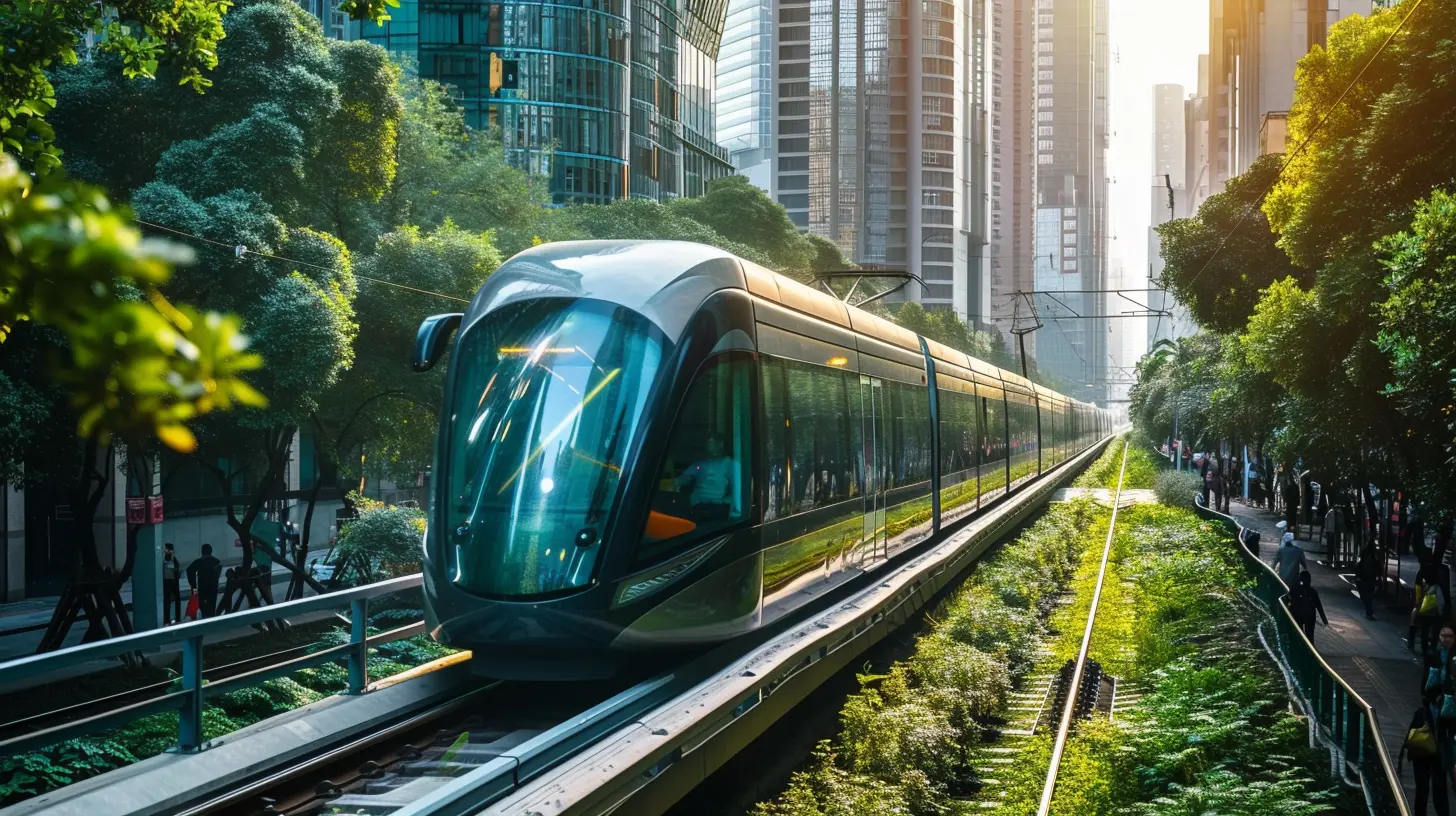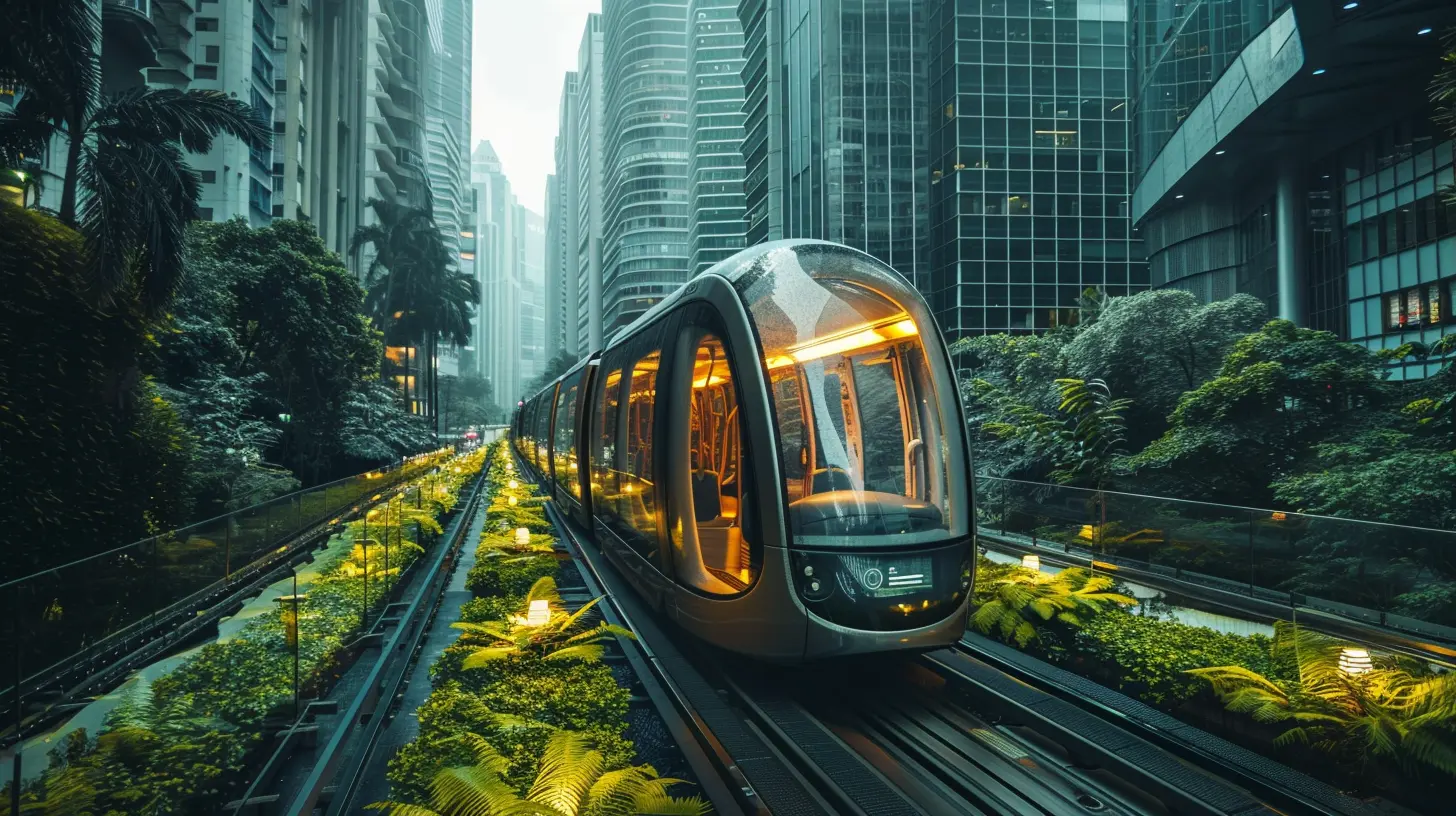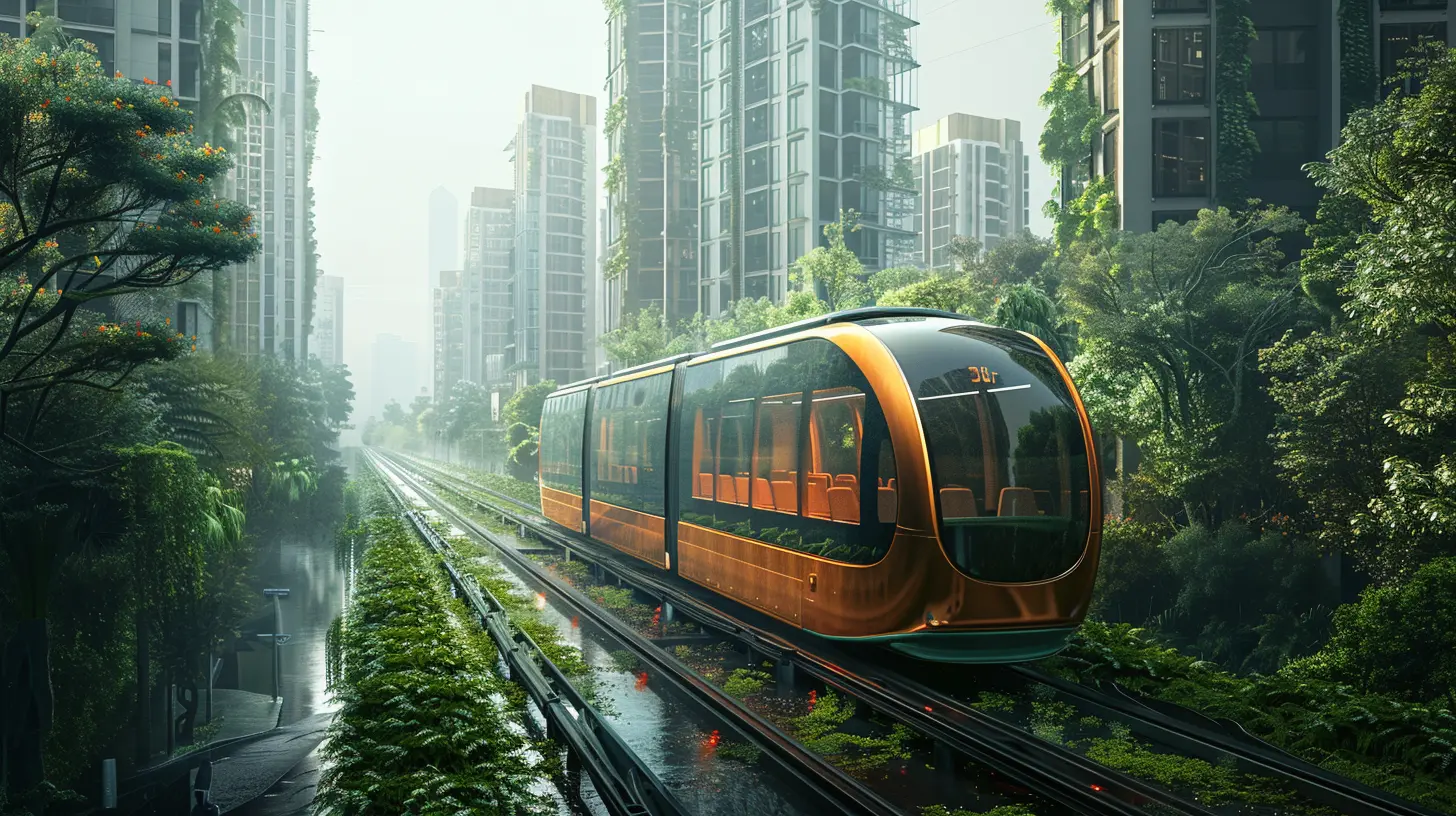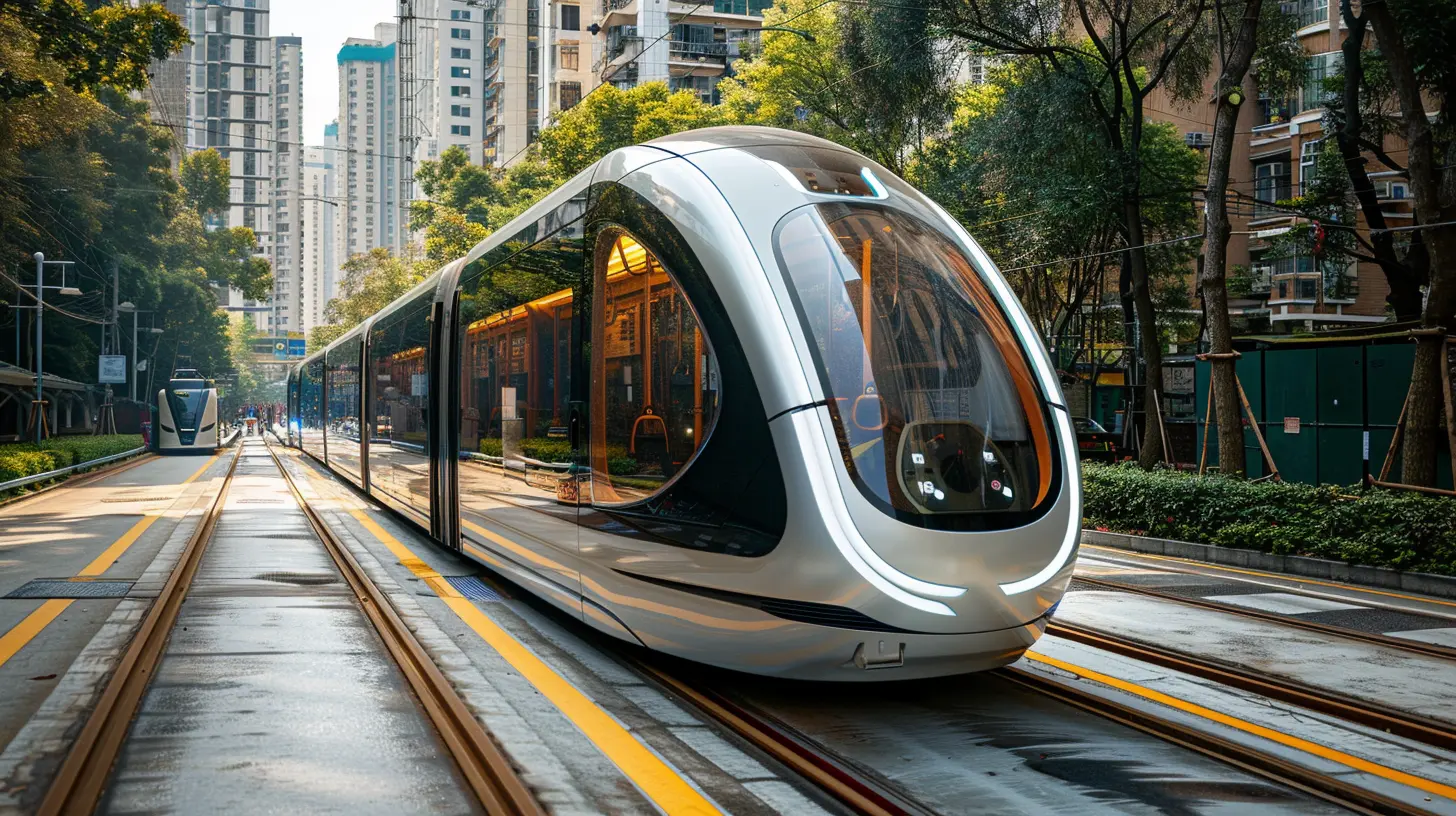The Future of Public Transportation: Green Tech Solutions for Cleaner Cities
23 July 2025
Let’s be honest—our cities are growing, traffic's getting worse, and the air? Well, not exactly a breath of fresh air anymore. That’s where green tech dives in like a superhero with a solar-powered cape. Public transportation, once noisy, smog-belching, and not always reliable, is being flipped on its head. It’s getting smarter, cleaner, and a lot more environmentally friendly.
But how are cities pulling off this green evolution? What’s really happening behind the scenes—and the wheels—to create cleaner, healthier, and more efficient urban transportation networks?
Buckle up (hopefully in an electric bus), because we’re diving into the future of public transportation and the green tech solutions paving the way to cleaner cities.
Why We Need Greener Transit – Like, Yesterday
Let’s paint a quick picture. Imagine a Monday morning rush hour. Honking cars, buses growling through diesel engines, smog cloaking buildings, and frustrated commuters clinging to hope and Wi-Fi signals. Sounds familiar?Now imagine that same scene, but it’s quiet. People glide around the city in electric buses or hop on solar-powered trams. The air is fresher, and emissions? Almost zero.
That’s the dream green transportation aims to turn into reality.
The transportation sector contributes about 25% of global CO2 emissions. Public transport plays a huge role here. So greening it isn’t just “cool” tech—it’s essential for fighting climate change, reducing air pollution, and making urban life more livable.
Electric Buses: The Silent Warriors of the Streets
Ever noticed how modern electric buses just... sneak up on you? No rumble, no smoke—just a quiet hum. It’s kind of creepy, in a good way.What Makes Them So Green?
Electric buses don’t burn fossil fuels. They run on batteries, which can be charged using renewable energy sources like solar or wind power. Zero tailpipe emissions mean they don’t add harmful gases like CO2 or NOx to the atmosphere.The Benefits Stack Up
- Cleaner air: Cities like Shenzhen, China, replaced all their buses with electric ones—and air quality noticeably improved.- Lower noise pollution: Bye-bye engine roars.
- Cheaper to run: Fewer moving parts mean lower maintenance costs.
Sure, the upfront investment can be steep, but the long-term payback in health, savings, and sustainability is worth its weight in lithium.
Hydrogen Fuel Cell Transit: The Dark Horse
While electric buses hog the spotlight, hydrogen fuel cell vehicles are quietly hustling in the background. They're not just science fiction either—these things are real, and they’re starting to roll out in cities around the globe.What’s the Deal With Hydrogen?
Here’s the short version: hydrogen fuel cells generate electricity through a reaction between hydrogen and oxygen. The only byproduct? Water vapor.No carbon emissions. No nasty pollutants.
Pros and Potential
- Longer range: Hydrogen buses can go further than most electric ones before needing a refill.- Faster refueling: No hours-long charging sessions.
- Great for larger vehicles: Ideal for long-haul or high-capacity routes.
But there are challenges—mainly around fuel infrastructure and hydrogen production. Green hydrogen (made with renewable electricity) is the golden ticket, but it's still expensive to produce. Give it time though—costs are dropping, and innovation’s speeding up.
Trains, Trams, and The Electrified Rail Revolution
Trains and trams are the OGs of public transport. They’ve been around forever, but now, they're going high-tech and low-emission.All Aboard the Electric Express
Electric rail systems have been around for a while, but new advancements are making them even greener. Think regenerative braking, smarter routing, lightweight materials, and even trains that run entirely on renewables.- Cities like Amsterdam and Berlin are investing heavily in electric and hybrid trains powered by solar or wind energy.
- Battery-powered trains are in trial phases in parts of the U.S. and Europe, slashing emissions on non-electrified routes.
The goal? Carbon-neutral rail systems that can carry thousands without costing the Earth... literally.
Microtransit and E-Mobility: The First and Last Mile Game Changer
Ever heard of microtransit? It’s kinda like public transportation meets Uber, minus the surge pricing.Think small, flexible, on-demand shuttles that can be ordered from your phone and take you to the nearest train, or directly to your destination. Add electric bikes and scooters into the mix, and boom—you've solved the “last mile” puzzle that plagues so many commuters.
Why This Is a Big Deal
The “last mile” is the short distance between a transport hub and your actual destination. For many, it’s the deal-breaker that makes them say, “Eh, I’ll just drive.”Microtransit and shared e-scooters/bikes fill that gap, making the public transit system smoother, more accessible, and way more attractive.
And guess what? These options are:
- Eco-friendly
- Affordable
- Data-driven (routes adapt based on usage)
Basically, it’s like Uber met public transit and had a green, efficient baby.
Smart Cities and IoT: Making Transit Smarter, Not Just Greener
Green tech isn’t only about what vehicles we use—it’s also about how smartly we use them.Welcome to the Internet of Things (IoT) and smart city integration. With sensors, big data, and AI, cities can monitor, manage, and optimize transportation in real-time.
Real Trends, Real Benefits
- Smart traffic lights reduce wait times and emissions.- Predictive maintenance keeps buses, trains, and even bike stations in top shape.
- Real-time tracking apps improve user experience and reduce unnecessary trips or long waits.
- Dynamic routing allows buses to change their route based on actual demand.
All this tech creates a smoother, greener ride for everyone involved.
Renewable Energy: Powering the Entire Transit Ecosystem
Switching to electric or hydrogen is great, but where does that energy come from?If a city’s entire fleet of electric buses is charged using coal-generated electricity… we’ve kinda missed the point.
More and more, cities are turning to renewable energy—like solar, wind, and hydro—to power their public transport systems.
- Solar-powered charging stations are popping up worldwide.
- Rail systems powered by wind farms? Yep, that’s already happening in the Netherlands.
- Energy storage solutions are making it easier to use renewables consistently, even when the sun’s not shining.
This full-circle approach ensures public transit isn't just cleaner at the tailpipe—but all the way to the power grid.
Policy and Government Backing: The Real MVPs
All the cool tech's useless without real support. Thankfully, governments are finally seeing the writing on the smog-covered wall.Countries around the world are setting ambitious goals:
- The EU wants to be climate-neutral by 2050.
- The U.S. is pumping billions into clean transport via infrastructure bills.
- India and China are both incentivizing electric buses and two-wheelers.
And it’s not just national governments. Local city leaders, mayors, and even private companies are getting on board, offering subsidies, grants, and partnerships to push green transit forward.
The Road Ahead: What We Can Expect in the Next 10 Years
Let’s throw on our future goggles. What does the next decade hold for public transportation?1. More Sharing, Less Owning
Mobility-as-a-Service (MaaS) platforms will let you plan, book, and pay for all your rides—bus, scooter, train, whatever—from one app. Easy, efficient, and less car ownership.2. Fully Autonomous Eco Fleets
Self-driving electric buses and shuttles may sound sci-fi, but they’re already being tested. They promise safer roads, reduced traffic, and nonstop public service.3. Hyperloop and High-Speed Rail
Okay, this one's ambitious, but if Elon Musk and others have their way, we could be zipping between cities in vacuum tubes at airplane speeds minus the emissions.4. More Human-Centered Urban Design
Green tech is just a tool. The goal? Cities that prioritize people over cars—more walkable, bikeable spaces with cleaner air and fewer traffic jams.You Can Play a Part Too
You don’t need to build a hydrogen-powered tram in your backyard to help out. Supporting green transport can be simple:- Choose public transit over your car when possible.
- Advocate for better transit policies in your community.
- Support businesses and leaders prioritizing sustainability.
Every small step—just like with every green mile—adds up.
Final Thoughts: Clean Commutes, Cleaner Conscience
The future of public transportation is more than just shiny tech and electric buses. It’s about creating better, healthier cities for all of us. A place where kids can breathe easy, where noise doesn’t drown out conversation, and where getting from A to B doesn’t cost the planet.Green tech isn’t just transforming transit—it’s transforming everyday urban life.
So, next time you hop onto that near-silent e-bus or scoot to work on a shared e-bike, remember—you’re not just commuting. You’re part of a movement toward cleaner, smarter cities.
all images in this post were generated using AI tools
Category:
Green TechnologyAuthor:

Michael Robinson
Discussion
rate this article
2 comments
Kenzie Harper
Embracing green tech solutions in public transportation isn't just a necessity—it's a bold step towards sustainable cities. Let’s innovate for cleaner air, reduced congestion, and a brighter, greener future for all!
November 13, 2025 at 1:47 PM

Michael Robinson
Thank you for your insightful comment! Indeed, embracing green tech in public transportation is crucial for creating sustainable urban environments and improving quality of life. Let's continue to innovate together!
Caleb Parker
Empowering cities with sustainable transit solutions!
August 2, 2025 at 2:29 AM

Michael Robinson
Thank you! Sustainable transit is crucial for cleaner, more vibrant cities. Let's embrace these innovations together!


